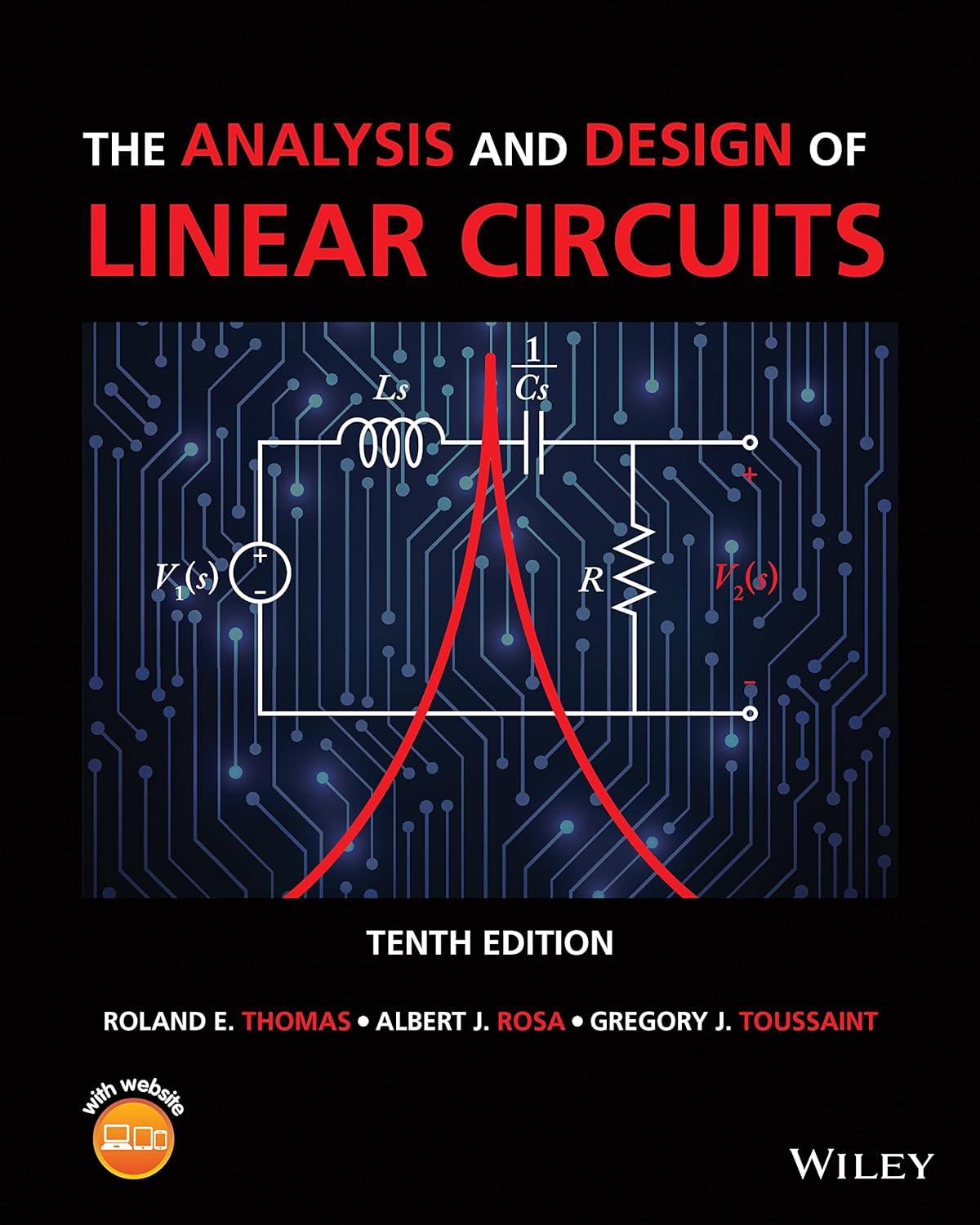A circuit consists of five voltages, namely, (v_{mathrm{a}}, v_{mathrm{b}}, v_{mathrm{c}}, v_{mathrm{d}}), and (v_{mathrm{e}}). The voltage from (v_{mathrm{a}})
Question:
A circuit consists of five voltages, namely, \(v_{\mathrm{a}}, v_{\mathrm{b}}, v_{\mathrm{c}}, v_{\mathrm{d}}\), and \(v_{\mathrm{e}}\). The voltage from \(v_{\mathrm{a}}\) to \(v_{\mathrm{b}}\) is \(-5 \mathrm{~V}\), from \(v_{\mathrm{b}}\) to \(v_{\mathrm{c}}\) is \(10 \mathrm{~V}\), from \(v_{\mathrm{a}}\) to \(v_{\mathrm{e}}\) is \(-2 \mathrm{~V}\), and from \(v_{\mathrm{b}}\) to \(v_{\mathrm{d}}\) is \(8 \mathrm{~V}\).
(a) If one wanted to eliminate negative voltages, which voltage would be best to select as ground?
(b) What would all the remaining voltages be with your ground selection?
Fantastic news! We've Found the answer you've been seeking!
Step by Step Answer:
Related Book For 

The Analysis And Design Of Linear Circuits
ISBN: 9781119913023
10th Edition
Authors: Roland E. Thomas, Albert J. Rosa, Gregory J. Toussaint
Question Posted:





